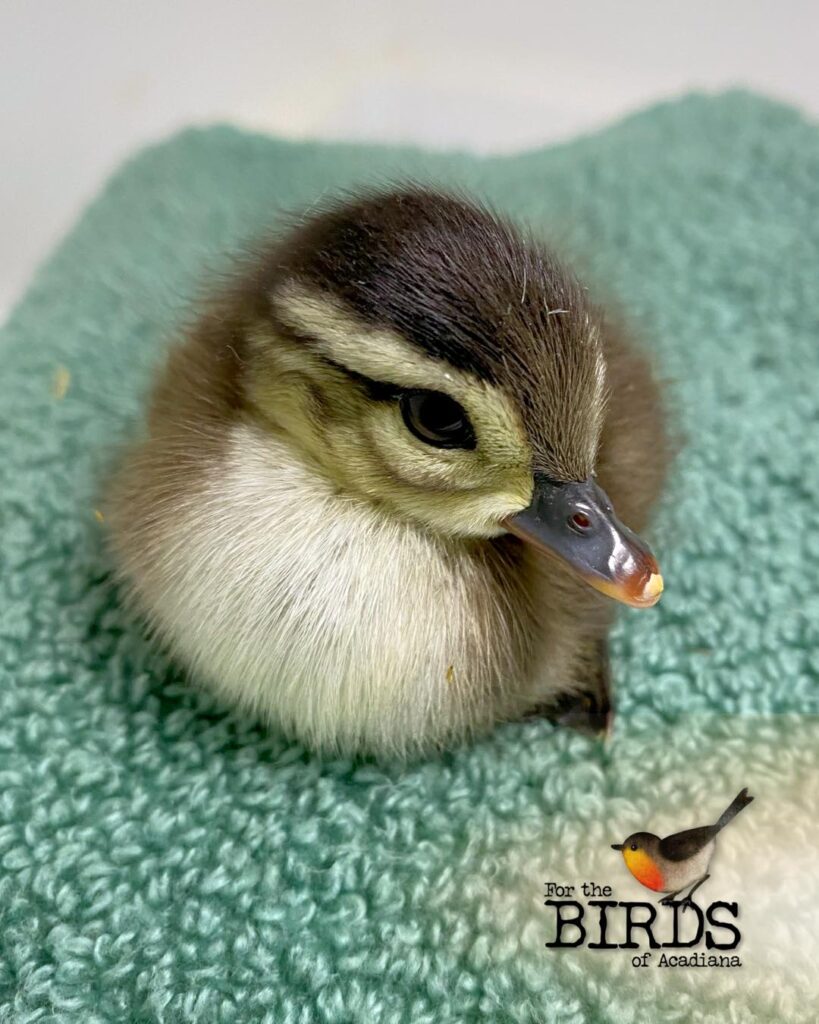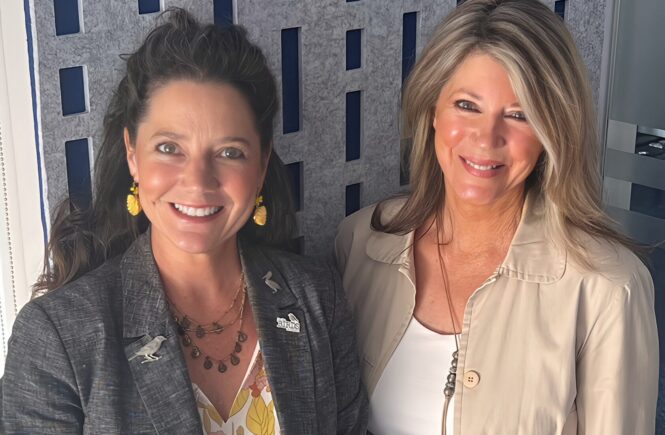Podcast: Play in new window | Download (Duration: 54:25 — 74.7MB)
Julie Rabalais, founder and Director of For the Birds of Acadiana, joins Discover Lafayette to share her love of birds and commitment to rehabilitating wild songbirds, waterbirds and waterfowl.
For the Birds of Acadiana is Louisiana’s only State and Federally permitted facility dedicated to the rehabilitation of federally protected songbirds, Waterfowl, and Waterbirds. Located in Lafayette, the 501(c)(3) non-profit organization cares for nearly 1,000 wild birds annually, working to ensure the eventual safe return of the birds to the wild. The organization also raises awareness and inspire others to join in safeguarding our precious avian species. The work is truly a labor of love for Julie Rabalais and the volunteers who assist her with transporting birds and keeping the facility clean. People who find injured wild birds can bring them in to For the Birds of Acadiana at no charge.

For years, local fashionistas knew Julie as the proprietor of Jewelie’s Boutique, located on Rena Drive. Educated as a graphic designer, Julie is creative and brings a touch of beauty to all the things she touches. When she sold the shop after 14 years in business, she wanted to do something that would keep her home where she could enjoy nature. First, she became a Master Gardener. She says “Then, I figured, why not do something that has a purpose and I can stay busy at the same time?” Hence the creation of For the Birds of Acadiana.

“Birds have always been a love of mine, since my childhood days in Michigan. I’ve always enjoyed birds as a hobby. I’m just a bird lover, not trained in ornithology (the scientific study of birds), but I’ve always had a knack for caring for birds. But just because I’m a bird lover by no means made me qualified to do what I do today. A colleague in Youngsville who rehabilitates avian raptors, Letitia Labbie, took me under her wing in 2019 and mentored me. It took a great deal of time to learn nutrition, how to care for the wild birds, how often to feed them, how to triage, how to properly cage them. In order to even apply for a license, you have to have adequate shelter space that meets the requirements of the National Wildlife Federation.”
In order to become a certified avian rehabilatator, you have to mentor under another licensed rehabilitator and complete the Louisiana Wildlife and Fisheries Rehabilitation Basic Skills Course, have a letter of support from a veterinarian, pass a facility inspection, and much more. Veterinarian partners prescribe needed medications for the birds being rehabilitated.
Under the Migratory Bird Treaty Act of 1918, it is illegal for individuals who are not certified to care for wild birds that they find, something most of us are not aware of. Julie says, “It is illegal to possess the birds, their nests, their eggs, or even breed them, because they are a federally protected species. Most people, when they see a little baby bird with its beak open, want to feed it and give it water. Unfortunately, that is not advisable.



Julie says, “Water can kill a bird, as it can aspirate a stressed bird very easily. An injured bird can not metabolize food and liquids when it it stressed. Feeding is the last thing you want to do. We encourage people not to “Google” what to do as there is a plethora of misinformation online.”
If you find an injured wild bird, please call Julie Rabalais/For the Birds of Acadiana at (337)501-4523, and you will be asked to take a photo of the bird and send it in with a description of the bird’s condition. This information will provide guidance to Julie as to whether or not the bird requires assistance or may be able to survive on its own.

“I live For the Birds of Acadiana 24/7. Little did I realize how big a step it was going to be. I really thought it would be a part-time thing. But I go all in. There’s no sense doing something halfway.” For the Birds of Acadiana is a total non-profit endeavor, with no state or federal funding. Getting a grant is few and far between. Julie relies on donations from the public and pays for many expenses with personal resources. “We rely on donations from people. It costs between $100 to $300 to rehabilitate one wild bird. We couldn’t do what we do without them.” Julie takes in birds from 7 a.m. to 7 p.m., but you must call first and send a photo so that the true situation of the injured bird may first be assessed.
People bringing in injured wild birds are advised to drape a towel over the bird to protect it, and place it in a shoebox or other such receptable with holes poked in the lid. “It’s a myth that the parent will reject the baby bird if a human touches it. Warmth is the key. Avoid cold air conditioning, and put the bird in a space away from kids and pets. The more stress the bird experiences, the greater chance it will not make it.”
Once Julie has possession of the injured bird, she says, “Our goal is not to cuddle with them so as not to imprint on them, because we want them to remain wild, especially water birdss. Many times we put a cover over our face when feeding them so that they don’t associate their food source with humans. We even have puppets so that the birds will associate food with adult birds.”

“Our part of the country is considered the Gateway of the Mississippi Flyway, one of four major corridors where birds migrate from South America. our coastal area is considered the Welcome Center, the birds’ first resting place. They travel through our area as they migrate.”
The three greatest causes of bird mortality in the U. S. and Canada are attacks by domestic, free-roaming cats, collisions, and habitat loss.

Up to 1 billion birds are killed annually in the United States by collisions with
vehicles, buildings, windows, power lines, communication towers, and wind turbines. Most will die at night, as that is when birds migrate in the Spring and Fall, staying at low altitudes, at the height of a 4-floor building. Just last October during migratory season, this crisis was vividly displayed when thousands of birds were killed in a 24-hour period after colliding with Chicago’s McCormick Place skyscraper, when the building’s lights were left on at night. Lights disorient the birds, and tragically, 54 to 76% of window collisions are fatal to birds. The building’s owners have taken steps to avoid further tragedy by installing window film to reduce bird collisions. Julie says, “The pattern deters birds, but is virtually nondetectable to humans.” Similar decals may be purchased for installation on the outside of your home or office building windows. For more information, visit https://abcbirds.org/blog/truth-about-birds-and-glass-collisions/?fbclid=IwY2xjawE1qr5leHRuA2FlbQIxMAABHV4eF2JLgSI_MODPtuIY31QTpY7NQi9_OsJs7GEVVykIxMt2yEk0DI_pVg_aem_0e8gqYbzbAfOHPSJN18rCg.
To learn more and to donate, please visit https://www.forthebirdsofacadiana.com/donate.
Thank you, Julie Rabalais and For the Birds of Acadiana, for your selfless, lifesaving work!





